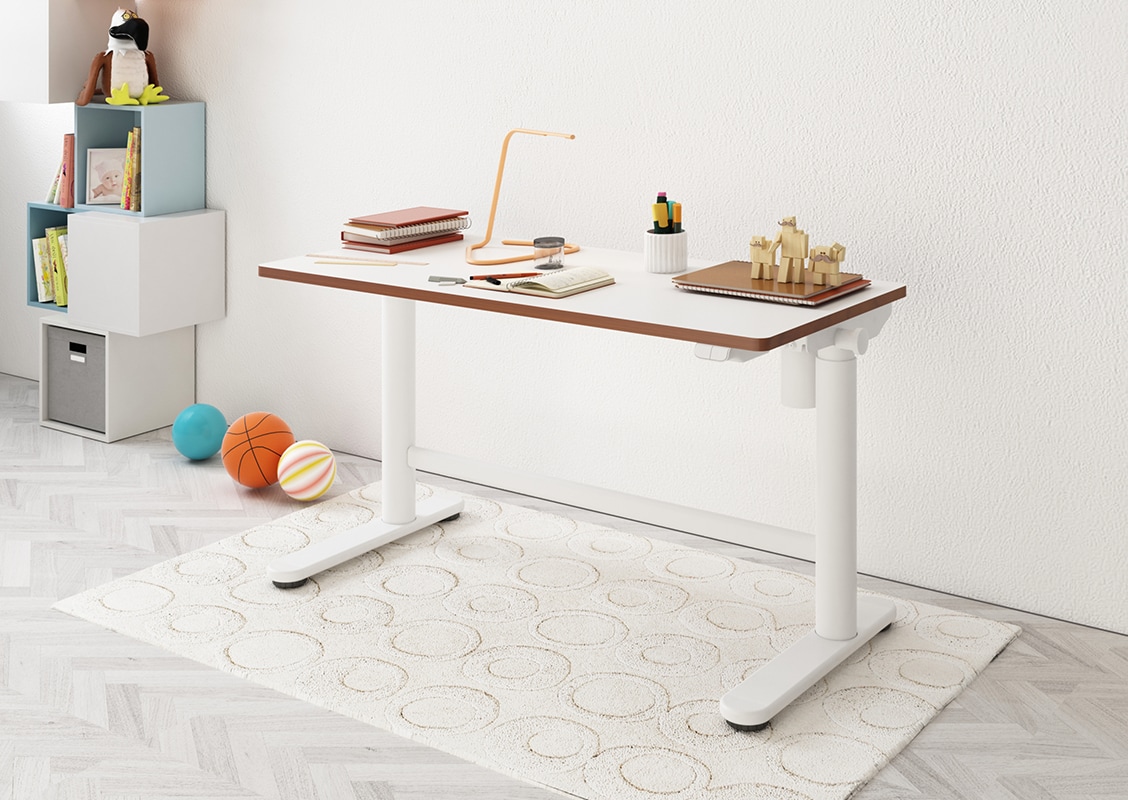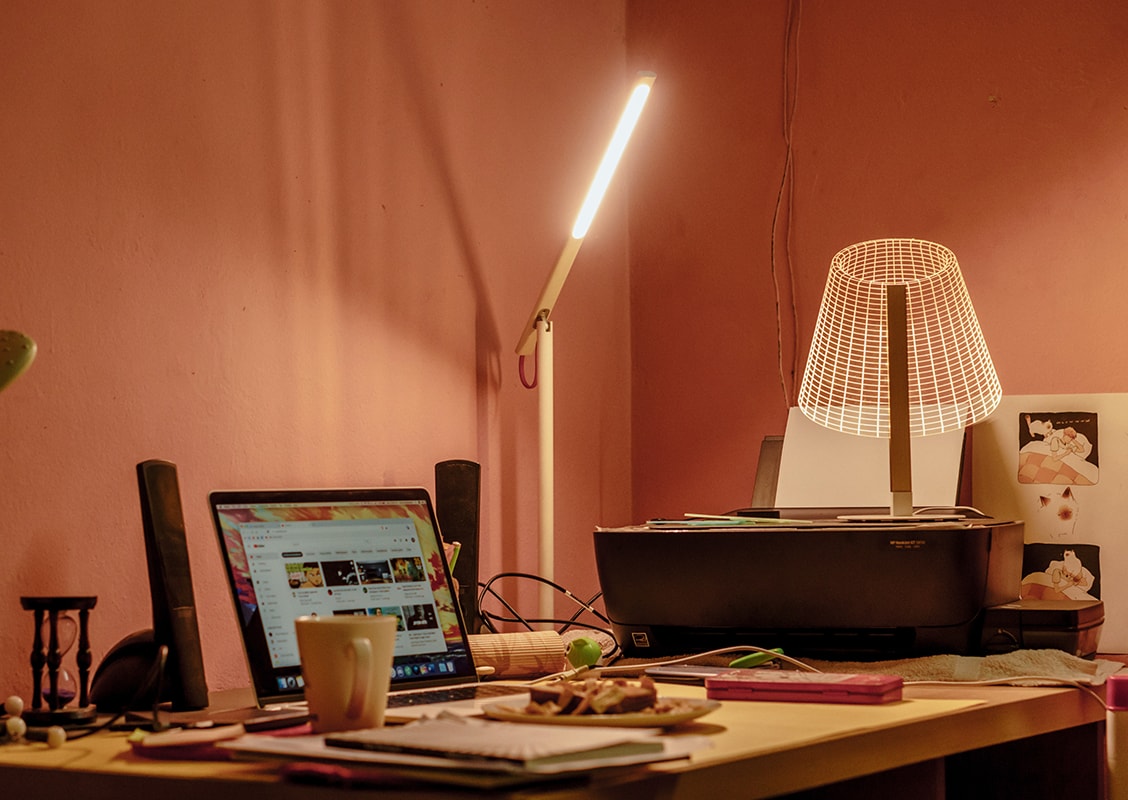As the education landscape continues to evolve, we find ourselves constantly seeking innovative ways to enhance our children's learning experiences. Today, we delve into an exciting concept that has been gaining momentum in recent years: the role of standing desks in the learning journey of children with Attention Deficit Hyperactivity Disorder (ADHD).
Brace yourselves, for we are about to embark on a journey that combines functionality, creativity, and the power to unlock the full potential of our little ones.
Unleashing the Power of Standing Desks
Picture a classroom bustling with energy and curiosity. Students immersed in their studies, actively engaging with their surroundings and tackling challenges head-on. Now, add standing desks into the mix, and watch the magic unfold. Standing desks, also known as height adjustable desks, offer an array of benefits for children with ADHD, propelling their learning potential to new heights.

1. Enhanced Focus and Attention
ADHD can present challenges for children when it comes to maintaining focus and attention. The very act of standing encourages increased blood flow, resulting in improved oxygen and nutrient delivery to the brain. By engaging different muscle groups and providing a dynamic environment, standing desks help combat restlessness and promote greater concentration during lessons. As a result, children with ADHD are better able to stay on task and absorb information more effectively.
2. Increased Energy Expenditure
It is no secret that children with ADHD often have an abundance of energy. Traditional sedentary learning environments can make it difficult for them to channel this energy constructively, leading to restless behaviors and decreased productivity. Introducing standing desks into the equation allows for greater movement and physical activity while learning. The ability to shift positions, sway, or even take short breaks to stretch helps children release excess energy, leading to a calmer and more focused state of mind.
3. Improved Cognitive Function
The benefits of standing desks extend beyond physical movement. Recent studies have shown that standing while learning stimulates brain activity and cognitive function. When children with ADHD are given the opportunity to move, their brains become more receptive to learning, information retention, and problem-solving. By integrating standing desks into the learning environment, we create a dynamic atmosphere that ignites the cognitive fire within our children, enabling them to tap into their full potential.

4. Enhanced Posture and Core Strength
Sitting for extended periods can lead to poor posture and weakened core muscles. These issues are particularly prevalent in children with ADHD, as they may struggle to maintain an upright position for extended periods. Standing desks offer a remedy to this challenge. By promoting an upright posture and engaging the core muscles, these desks help children develop better posture habits, ultimately leading to improved overall physical health and well-being.
5. Boosted Mood and Self-Esteem
It is no secret that movement has a profound impact on mood and emotional well-being. For children with ADHD, the ability to shift, sway, and change positions as needed can positively influence their emotional state. By providing them with the freedom to move and explore their surroundings, standing desks create a sense of autonomy and empowerment. This newfound freedom enhances their self-esteem and instils a positive mindset, resulting in a more enjoyable and fulfilling learning experience.
Integrating Standing Desks: A Collaborative Approach
Now that we have explored the numerous benefits of these children's desks, it is essential to discuss how we can seamlessly integrate them into our children's learning environments. Here are a few suggestions:
1. Collaborate with Schools: Engage with your child's teachers and school administrators to explore the possibility of introducing standing desks in classrooms. Share the benefits of these desks and encourage open discussions about innovative learning environments that cater to the diverse needs of students with ADHD.
2. Creating a Home Learning/Home Schooling Environment: Extend the benefits of standing desks beyond the classroom by incorporating them into your child's study area at home. Design a space that is conducive to movement and exploration, allowing your child the freedom to stand, sway, and shift positions while engaging in their studies.
3. Encourage Movement Breaks: Help your child establish a routine that includes short movement breaks throughout their study sessions. Encourage them to take a few minutes to stretch, walk around, or engage in light physical activities. These breaks not only release excess energy but also promote better focus and concentration when they return to their tasks.
4. Embrace Flexibility: Recognize that different children have varying preferences and needs when it comes to learning. Some may thrive while standing, while others may benefit from alternating between sitting and standing. Allow your child the flexibility to choose their preferred position, ensuring they feel comfortable and engaged throughout their learning experience.
5. Lead by Example: As parents, we play a crucial role in shaping our children's habits and attitudes. Set an example by incorporating movement and active learning into your own daily routine. Consider investing in a standing desk for your own workspace and share your experiences with your child. By modeling healthy behaviors, you inspire them to embrace an active and dynamic approach to learning.
Final Word
As parents we need to understand that the journey to unlock our child's full learning potential begins with a single step—emphasizing the power of standing desks in the lives of children with ADHD. By introducing these innovative workstations into the learning environment, we can enhance focus, increase energy expenditure, improve cognitive function, develop better posture, and boost mood and self-esteem.
Let us embrace this creative and functional approach to education, both within classrooms and at home. Collaborate with schools, create dynamic home learning environments, encourage movement breaks, and foster flexibility. By doing so, we empower our children to thrive academically, emotionally, and physically.
Remember, the power of standing desks goes beyond providing an alternative to traditional seating arrangements. It opens a gateway to a world of possibilities where our children can excel, explore, and embrace their unique learning styles. Together, let us redefine the way our children learn, one standing desk at a time.